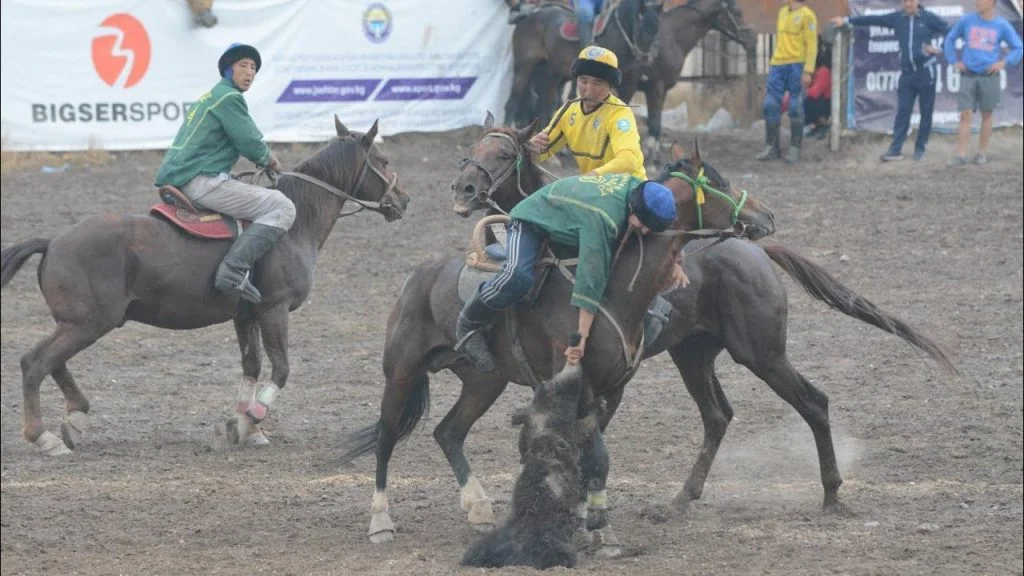Traditions and folklore of Kyrgyzstan
Traditions and folklore of Kyrgyzstan
Kyrgyzstan is a country with a rich cultural tradition that is deeply rooted in the nomadic way of life and the historical experiences of the people. The country’s traditions and folklore are living expressions of its history, identity and natural environment. From music and dance to national holidays and traditional sports, Kyrgyzstan offers a fascinating variety of cultural experiences.
Music and dance
Music plays a central role in Kyrgyz culture. Traditional Kyrgyz music is strongly inspired by nature and the nomadic lifestyle. The most well-known musical instruments include the “komuz”, a three-stringed lute, and the “temir komuz” (jew’s harp), which are often used in traditional performances.


A particularly important part of the musical tradition is the epic narrative poem “Manas”, which is considered one of the longest epics in the world. The tale of Manas, the mythical hero of the Kyrgyz, is often performed by “Manaschi”, who impress with their impressive recitation and their ability to reproduce the epic from memory.
Traditional dances are also an important part of Kyrgyz culture. These dances, which are often performed in colorful costumes, reflect the history, legends and everyday life of the Kyrgyz people. Group and solo dances are common at festivals and celebrations and serve as an expression of community and joy.
National holidays
Kyrgyzstan celebrates a number of national holidays that have both historical and cultural significance. Among the most important are:
Independence Day (August 31): This day marks Kyrgyzstan’s independence from the Soviet Union in 1991 and is celebrated with parades, concerts, fireworks and various cultural events.
Nowruz(March 21): The New Year and spring festival, which has its origins in Zoroastrianism and is celebrated by many peoples of Central Asia. Nowruz symbolizes renewal and new beginnings and is celebrated with traditional food, music, dances and sports competitions.
Day of the Great Migration (May 9): Also known as Victory Day, this day commemorates the victory over Nazi Germany in World War II. It is celebrated with military parades and commemorative events in honor of the veterans.
Manas-FestThe Manas Festival is celebrated in honor of the famous “Manas” epic and its hero. These festivities include performances of the epic, traditional music and dances as well as sporting events. The festival serves to honor the importance of the epic for Kyrgyz identity.
Traditional sports
Sport has a long tradition in Kyrgyzstan and is closely linked to the nomadic culture. Traditional sports include:
Kok-Boru: This game, also known as “buzkashi”, is a fast-paced horseman’s game in which two teams try to carry the carcass of a goat into the opposing team’s goal. Kok-Boru is an exciting and physically demanding sport that requires skill, strength and teamwork.
Eagle Hunting (Adlerjagd): This ancient tradition demonstrates the Kyrgyz people’s close connection to nature. . In eagle hunting, hunters train golden eagles to catch wild animals such as foxes and hares. This art requires years of training and a deep bond between hunter and eagle.
Kyz Kuumai: This equestrian game, also known as “girl chasing”, is a traditional race in which a young man tries to catch up with a girl on a horse. If he reaches her, he is allowed to kiss her; if not, she symbolically beats him with a whip. The game is an entertaining element of festivals and celebrations.
Craftsmanship and markets
Kyrgyz handicrafts are another important part of the culture and reflect the creativity and craftsmanship of the people. Traditional felt carpets, known as “Shyrdak” and “Ala-Kiyiz”, are colorful and intricately designed pieces that often depict geometric patterns and symbols of nature. These rugs are made from sheep’s wool and are not only decorative but also functional.
AAt the markets in cities like Bishkek and Osh, you can find a variety of handmade goods, including jewelry, clothing and household items. These markets are lively places where you can experience the everyday life of the Kyrgyz and buy unique souvenirs.
Traditions in everyday life
Kyrgyz hospitality is legendary and an essential part of the culture. Guests are often greeted with a warm “Tamina Tamsyn” (welcome) and served tea and traditional dishes. The yurt, the traditional nomadic tent, is a symbol of hospitality and a place where family and friends come together.
Kyrgyz culture attaches great importance to respecting elders and maintaining family ties. Traditional customs and rituals, such as weddings and funerals, play an important role in social life and are often carried out with great effort and attention to detail.
Destinations
Discover the most beautiful travel destinations in Kyrgyzstan
Info
Learn more about the country and its culture
Request
Discover the hospitality and culinary specialties.
© 2025 Kyrgyzstan Travel. Built using WordPress and OnePage Express Theme.